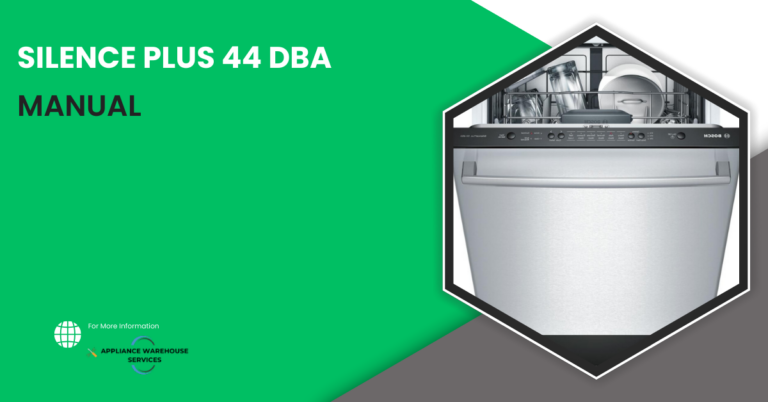“How to Sanitize Dishwasher” is a process that involves cleaning and disinfecting your dishwasher to ensure it functions efficiently and maintains a high level of hygiene. It involves steps to remove mineral buildup, food particles, and odors that can accumulate over time inside the dishwasher. Regularly sanitizing your dishwasher not only improves its performance but also ensures that your dishes come out clean and free from any contaminants.
Sanitizing your dishwasher is essential to maintain the cleanliness of your kitchen and to prevent any potential issues that can arise from neglecting dishwasher maintenance.
Why Sanitize Your Dishwasher?

1. Prevent Foul Odors: Over time, food particles and grime can accumulate in your dishwasher, leading to unpleasant odors. Regular sanitization can help eliminate these smells.
2. Maintain Performance: A clean dishwasher operates more efficiently, ensuring your dishes come out spotless after each cycle.
3. Prevent Costly Repairs: Neglecting dishwasher maintenance can result in damage to pumps and filters, leading to costly repairs. Sanitizing can extend the lifespan of your appliance.
When to Sanitize Your Dishwasher

1. Routine Cleaning: Perform routine cleaning once every 3 months if you use your dishwasher frequently (twice a day). If you run it less often (once a day), aim for a cleaning every 6 months.
2. Weekly Exterior Cleaning: Wipe down the exterior of your dishwasher weekly to remove hard water spots and maintain its appearance.
3. Daily Maintenance: Remove food particles from inside the dishwasher daily or after each cycle to prevent clogs and odors.
How to Sanitize Your Dishwasher
Tools You’ll Need
Before we dive into the cleaning process, gather these essential tools:
- Vinegar
- Dish soap
- Baking soda
- Cloth or sponge
- Toothbrush or bottle brush
- Wire (for spray armholes)
- Magnetic hooks (for storage)
- Distilled white vinegar (for deep cleaning)
Step-by-Step Cleaning Guide
1. Preparing for Cleaning
- Switch off and unplug your dishwasher for safety.
2. Remove the Racks

- Start by taking out the lower rack and then the upper rack.
- Dampen a cloth with a mixture of vinegar, dish soap, and water. Wipe down both racks to remove hard water stains. Leave for 5 minutes.
3. Clean the Interior
- Dampen another cloth with plain water and wipe down the racks to remove any remaining stains.
- Move to the floor of the dishwasher where you’ll find the filter or strainer. Check for food particles near the drain tray.
4. Tackle the Filter
- Rotate the filter counterclockwise to remove it.
- Clean the filter using a toothbrush or bottle brush under running water for a few seconds.
- Clean the tray as well.
- Apply a mixture of dish soap and baking soda to the dishwasher floor and let it sit for five minutes.
5. Address Spray Armholes
- Use a wire to clear any clogs in the spray armholes.
- Gently scrub the spray arms with a toothbrush to remove any buildup.
6. Clean the Door
- Spray the detergent and rinse aid slot with the cleaning mixture.
- Wipe the door edges and corners to remove hard water stains.
- Pay special attention to the rubber gasket, as it can accumulate grime. Use a toothbrush and water with soap to clean it gently.
7. Final Touches
- Clean both sides of the dishwasher exterior.
- Utilize magnetic hooks for storage on the side of the dishwasher.
- Don’t forget the cutlery stand, giving it a thorough scrub and rinse.
8. Load Dishes Properly
- Remove food particles from your dishes before loading them.
- Peel off labels and barcodes from jars before placing them in the dishwasher.
9. Post-Cycle Care
- After each cycle, leave the dishwasher door slightly ajar to allow moisture to evaporate, preventing mold buildup.
- Periodically check for drain blockages to ensure optimal performance.
Deep Cleaning:
1. Remove and Clean the Filter:
- Turn the filter counterclockwise to remove it.
- Soak it in distilled vinegar overnight and rinse.
2. Use Vinegar for Self-Clean:
- Place an 8-ounce cup of distilled white vinegar in the lower basket.
- Run a sanitize cycle to combat odors.
3. Nozzle Maintenance:
- Remove clogged nozzles and soak them in vinegar overnight.
- Ensure water can flow through every hole before reinserting.
Natural Dishwasher Cleaner
A natural dishwasher cleaner typically refers to a cleaning solution or method that uses non-toxic and environmentally friendly ingredients to clean and maintain a dishwasher. The most common natural dishwasher cleaner ingredients include:
- Vinegar: White vinegar is a natural acid that can help break down mineral deposits, remove stains, and eliminate odors inside the dishwasher.
- Baking Soda: Baking soda is an abrasive and alkaline substance that can help scrub away stains and residue from the dishwasher’s interior.
- Lemon Juice: Lemon juice is acidic and can help remove hard water stains and provide a fresh, citrus scent to the dishwasher.
To make a natural dishwasher cleaner, you can combine some of these ingredients in various ways. One common method is to place a cup of white vinegar on the top rack of the dishwasher and run it through a cycle. Alternatively, you can sprinkle baking soda on the bottom of the dishwasher and run a short cycle. While these natural methods can help maintain your dishwasher’s cleanliness and prevent some buildup, as mentioned in the previous text, they may not be as effective at removing heavy or stubborn deposits.
To effectively clean a dishwasher, you can use a combination of natural and commercial cleaning agents. Here are steps and recommended cleaning agents to clean your dishwasher:
- Inspect and Remove Debris:
- Check the dishwasher’s filter, spray arms, and the bottom of the dishwasher for any visible debris, food particles, or objects. Remove any foreign materials.
- Clean the Filter:
- Remove the dishwasher’s filter (if applicable) and wash it under running water to remove any trapped food particles. Refer to your dishwasher’s manual for guidance on how to remove and clean the filter properly.
- Natural Cleaning Method:
- To remove general buildup and odors, you can use a natural cleaning method:
- Place a cup of white vinegar on the top rack of the dishwasher.
- Sprinkle a cup of baking soda on the bottom of the dishwasher.
- Run the dishwasher on a hot water cycle to help remove stains, odors, and minor buildup.
- To remove general buildup and odors, you can use a natural cleaning method:
- Commercial Dishwasher Cleaner:
- For more stubborn stains and heavy buildup, consider using a commercial dishwasher cleaner. Follow the instructions on the product label carefully.
- Lemon Juice:
- To add a fresh scent and help with cleaning, you can place a dishwasher-safe bowl or cup filled with lemon juice on the top rack and run a hot water cycle.
- Wipe Down Surfaces:
- After cleaning, use a damp cloth or sponge to wipe down the interior surfaces of the dishwasher, including the door gasket, walls, and racks.
- Clean the Exterior:
- Don’t forget to clean the exterior of the dishwasher, including the control panel and handles. Use a mild soapy solution and a cloth for this purpose.
- Maintenance Tips:
- Regularly remove and clean the filter (if your dishwasher has one) and check for debris in the drain area.
- Run a cleaning cycle every month or as needed to prevent buildup.
- Avoid overloading the dishwasher, as this can lead to inefficient cleaning.
Frequently Asked Questions (FAQs)
How often should I sanitize my dishwasher?
Perform routine cleaning every 3 to 6 months, depending on your usage. Weekly exterior cleaning and daily maintenance are also recommended.
Can I use vinegar for deep cleaning my dishwasher?
Yes, vinegar is effective for deep cleaning. Use it in a cup in the lower basket and run a sanitize cycle.
What if my dishwasher has foul odors?
Foul smells indicate the need for cleaning. Follow our guide to eliminate odors and maintain a fresh dishwasher.
Is it essential to remove labels from jars before loading them?
Yes, removing labels helps prevent clogs and ensures proper cleaning of dishes.
How can I extend the lifespan of my dishwasher?
Regular sanitization, daily maintenance, and avoiding excessive grime buildup can help extend your dishwasher’s lifespan.
In Conclusion
Your dishwasher, like any hardworking appliance, deserves your care and attention. Regular cleaning and maintenance will not only ensure your dishes come out sparkling clean but also extend the lifespan of your dishwasher.
Key Takeaways
- Run an empty dishwasher: Start by removing all dishes and running an empty cycle with hot water to flush out any loose debris or food particles.
- Clean the filter and spray arms: Remove and clean the dishwasher filter, and check the spray arms for clogs or buildup. Use a brush or toothpick to clear any obstructions.
- Vinegar and baking soda method: Place a cup of white vinegar in a dishwasher-safe container on the top rack and run a hot water cycle. Then sprinkle baking soda on the bottom of the dishwasher and run another short cycle to remove odors and stains.
- Use dishwasher cleaner: Purchase a commercial dishwasher cleaner and follow the manufacturer’s instructions to effectively sanitize and deodorize your dishwasher.
- Maintain regular cleaning: Make it a routine to clean the dishwasher every 1-2 months to prevent buildup and ensure it continues to operate efficiently.






